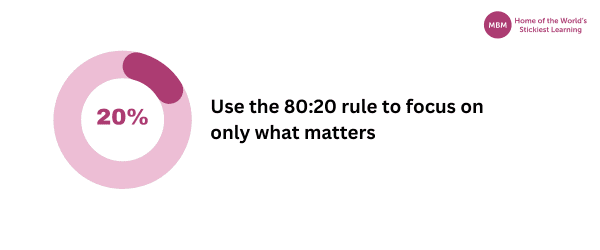The Fine Skill of Procrastinating Your Usefulness
We are all looking for time management hacks. These are tools and tips to help us to get more done. They’re the latest way of working that will release us from being overwhelmed or the latest technology that might just help us to revolutionise how we manage our time.
You’ve tried a bunch and mostly nothing has changed. Here’s what no one is telling you – Be less helpful. Yep, you heard me right!
Here’s a scenario you maybe can relate to. Every time John turns around on his chair and shouts to Sue about where to get something, Sue tells him. So what will John do next time he needs to know where to get something? You’re right. Ask Sue again.
And why wouldn’t he? We, humans, are lazy and want to get more done the quickest and easiest way possible. And why wouldn’t we? The problem is that the easiest way for us is not always the best way for everyone else.
John is About Unleashing Maximum Results With Minimal Effort to Get More Done

Certainly, Sue’s thinking why doesn’t John write down where to get that file, because he asks me every time? But John won’t change because he has no reason to. He’s doing what thousands of years of evolution have taught him to do – minimal resources for maximum outcome. Basically, he gets more done with little effort, disregarding any effect on Sue.
His brain has said, ‘How can I get this done quickest and easiest?’ and Sue was the answer. If this is to change Sue needs to change. For Sue, being interrupted is stealing her focus and her productivity. In other words, she is not able to get more done as she could have. Furthermore, ‘task switching’ as it’s known in time management circles, is the costliest of all the productivity thieves.
But Sue can’t say ‘No’, can she? I agree, she can’t. But there’s not just yes, or just no. She can solve it another way by putting hurdles in the way. Little hurdles that over time make John think, ‘I could do this quicker myself’. Next, you’ll see how this works and how it helps Sue to get more done.
Bonus Material ⇒ Ultimate Guide on Time Management Skills.
Example:
Here’s how Sue could have responded, rather than blurting yes. ‘John, give me 10 minutes as I just need to finish this thing I am working on.’
In those 10 minutes, John probably found the answer for himself. Dada! The change Sue has to make is to be helpful where she can be helpful. If she’s an expert and can add real value, then she should. Or if she is truly solving something John can’t, then she should help him.

For at least 20% of the things John asks (Taking Pareto’s 80:20), he could probably do them himself. Don’t reward his laziness. Don’t punish it either. Just make the route he has chosen (asking you), a little harder than the other route he could have chosen (finding it for himself).
Enjoyed this article? Show it by engaging with us on Linkedin.




